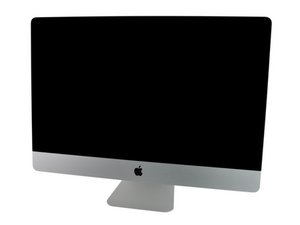iMac eats drives - Causes Hardware ECC errors
Strange issue here.
The client brought this iMac in because it wouldn't boot fully - it freezes about 90% through the progress bar. Passes all ASD tests. Issue was originally resolved a few months ago by rebuilding the drive directory in DiskWarrior. Doing the same causes it to boot again, but obviously there's a deeper issue.
The SMART status shows temperature warnings and Hardware ECC Recovered issues.
I replaced the Seagate Barracuda 7200RPM drive (about 3 years old) with a new version of the same model. Within one day, it's showing Hardware ECC Recovered issues as well!
I'm at a bit of a loss. I don't know what else to replace, but it sure seems like a hardware issue with some other part of the system.
As a side note, Apple had a hard drive warranty extension program on this model. The client's existing drive was put in by Apple under this program 3 years ago, even though he'd had no issues to that point, and until 3 months ago.
Does anyone have insight into this?
Bu iyi bir soru mu?

 7
7  5
5  2
2 
3 Yorum
What is the exact model of Seagate Barracuda drive you are using here. Is it the older SATA II (3.0 Gb/s) or the newer SATA III 6.0 Gb/s) drive?
Dan tarafından
The original drive was an ST31000528AS. The 1-day old replacement with the same errors (which only showed up after installing an OS and transferring the client's data) is an ST1000DX001-1NS162. The iMac has a SATA II interface but both drives are SATA III.
Colin tarafından
Did you address the hard drive temperature sensor issue either with one of the three hard drive brand specific cables or the OWC in-line thermal sensor?
mayer tarafından